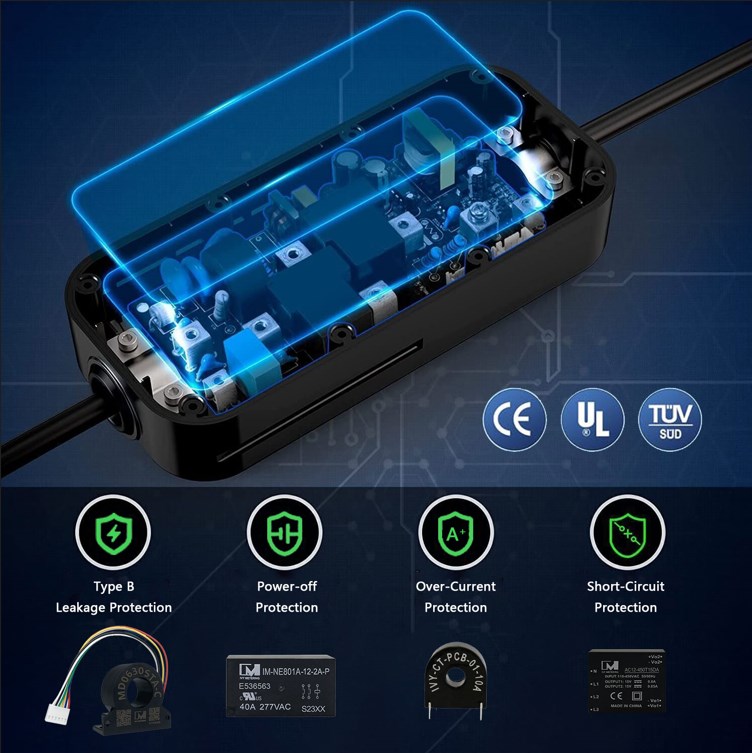Protection Requirements of EV Charger
For electrical equipment for public use, such as electric vehicle chargers, safety is the primary consideration, as these devices may be located outdoors, in wet environments, and around children. Protecting people from any risk is our motto and an important part of our mind.
Charging an electric vehicle requires a connection to a powerful electricity supply. Electrical safety is of paramount importance to avoid short circuits, overheating fires, or electric shocks. Those safety measures are provided by relays, residual current devices of type B installed on the switchboard, and surge protective devices, complying with their relevant product standards. However, some manufacturers claim for built-in protective devices or embedded protection on the chargers.

Leakage current protection
Leakage current protection is critical to the safety of electric vehicle charging systems. It prevents electric shock caused by leakage current from the charger or cable. The protection works by monitoring the leakage current and quickly disconnecting the power supply when the leakage current exceeds the allowed level (usually 6-30mA). Leakage current protection is required for both AC and DC chargers. Many electric vehicle plugs also have leakage protection built in. The protection resets after the fault is cleared. In most safety standards, electric vehicle chargers must be equipped with leakage protection. Choose an electric vehicle charger with certified sensitive leakage protection to ensure safety.
Residual Current Protection
Residual current protection detects any stray current in the ground wire and trips if it exceeds safe limits. It provides redundancy for the main leakage protection. Residual current monitors the imbalance between the live and neutral wires, indicating a ground fault. The residual current allowed before disconnection is typically 30-50mA. Residual current protection provides an extra safety margin as some leakage may not be detected by the main protection. DC chargers require residual current protection as they lack a continuous path to ground. Choose an EV charger that is designed to standards that require residual current protection.
Short-circuit protection
Short-circuit protection quickly disconnects the power supply if the output is short-circuited. This prevents heat buildup and damage. The protection works by detecting the high current generated when the output is short-circuited or grounded. It trips faster than regular overcurrent protection given the high current. Short-circuit protection should completely isolate the charging power supply. Automatic reset protection after the fault is cleared is standard. For safety, all electric vehicle chargers must be equipped with short-circuit protection according to regulations. Choose an electric vehicle charger that has been fully tested for short-circuit conditions.




